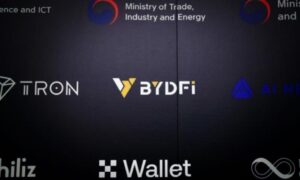A financial scam like money laundering is a method of legalizing vast sums of money acquired from illegitimate sources. Criminals transform their black money into white funds by passing it through gambling, cryptocurrency, or by purchasing expensive assets like those in the retail business.
Compliance professionals ban money launderers who launder funds, and the list containing their names is made open to the public. Illegal activities like massive smuggling, terrorist financing, and drug trafficking are the most widely used means of black money.
However, AML compliance has supported various businesses in fighting financial scams over time. Compliance professionals, namely the financial action task force, financial enforcement network, and others, have deployed protocols to fight these crimes. Still, the problem arises when not all financial institutions do not follow these regulations.
1. Small companies
Money launderers use the shoulder of small businesses which are not fully developed and are primarily offshore firms. These organizations usually follow regulations to a bare minimum.
Criminals use them to manipulate AML monitoring and to deploy the cash flow system into their use. Money launderers use the financial system and neglect AML verification by creating fake invoices and altering the information.
2. Smurfing
What money launderers do in this is divide the large sums of illicit funds into smaller groups. The money is then subsequently distributed over multiple platforms. It is usually carried out to avoid suspicious activities from being caught during AML screening.
3. Foreign financial institutions
Money launderers pass illegal money from foreign developed countries to small-scale developing or underdeveloped countries, where the money is concealed in multiple bank accounts. This method makes the traditional AML solutions impossible to expose fraudsters’ illegal acts.
4. Offshore businesses
Illicit money is widely distributed for charitable causes by imposters. Fraudsters store their funds in trust businesses or offshore companies to prevent AML solutions.
5. Layering
The natural and actual aim of the layering method is to put illicitly gained funds into a system of financial transactions that repeats itself through various channels. This is carried out to make AML security protocols fruitless by making it hard to uncover extensive money trails.
6. Extraction
This process assists in avoiding regulation enforcement that ultimately causes problems for others and makes it problematic to comprehend real fraudsters. Additionally, fraudsters submit a considerable sum of funds to enter a country’s legal system with their illegitimate funds.
7. AML and compliance
European unions have forced the financial sector to implement AML screening. In addition to this, the 5th AML directive has focused on the crypto sector, which is the favorite sector for money launderers to commit money laundering. This directive has also advised keeping checks on money laundering in Bitcoin.
AML services are required to prevent the prevalence of scams. Anti-money laundering solutions protect organizations and businesses from financial crimes, and combat money laundering, and fake identities. Firms develop and integrate AI-powered AML solutions to implement employee training regularly to ensure international regulation standards with already created approaches.
AML solutions are essential because they prevent the prevalence of money laundering and terrorist financing. In addition to preventing financial crimes, AML solutions are imperative because they enhance the reputation of a business in the market and save them from hefty fines.
Summing up
Businesses can find themselves paying financial fines and sanctions in case of non-compliance. It can further damage the reputation of financial institutions. To avoid fraudulent activities and assure AML compliance, digital businesses and banks must adhere to AML solutions.
Anti-money laundering solutions might identify transactional design, regularly check politically exposed persons and ultimate beneficial owners and any risk-based profiles, and avoid money laundering.


































